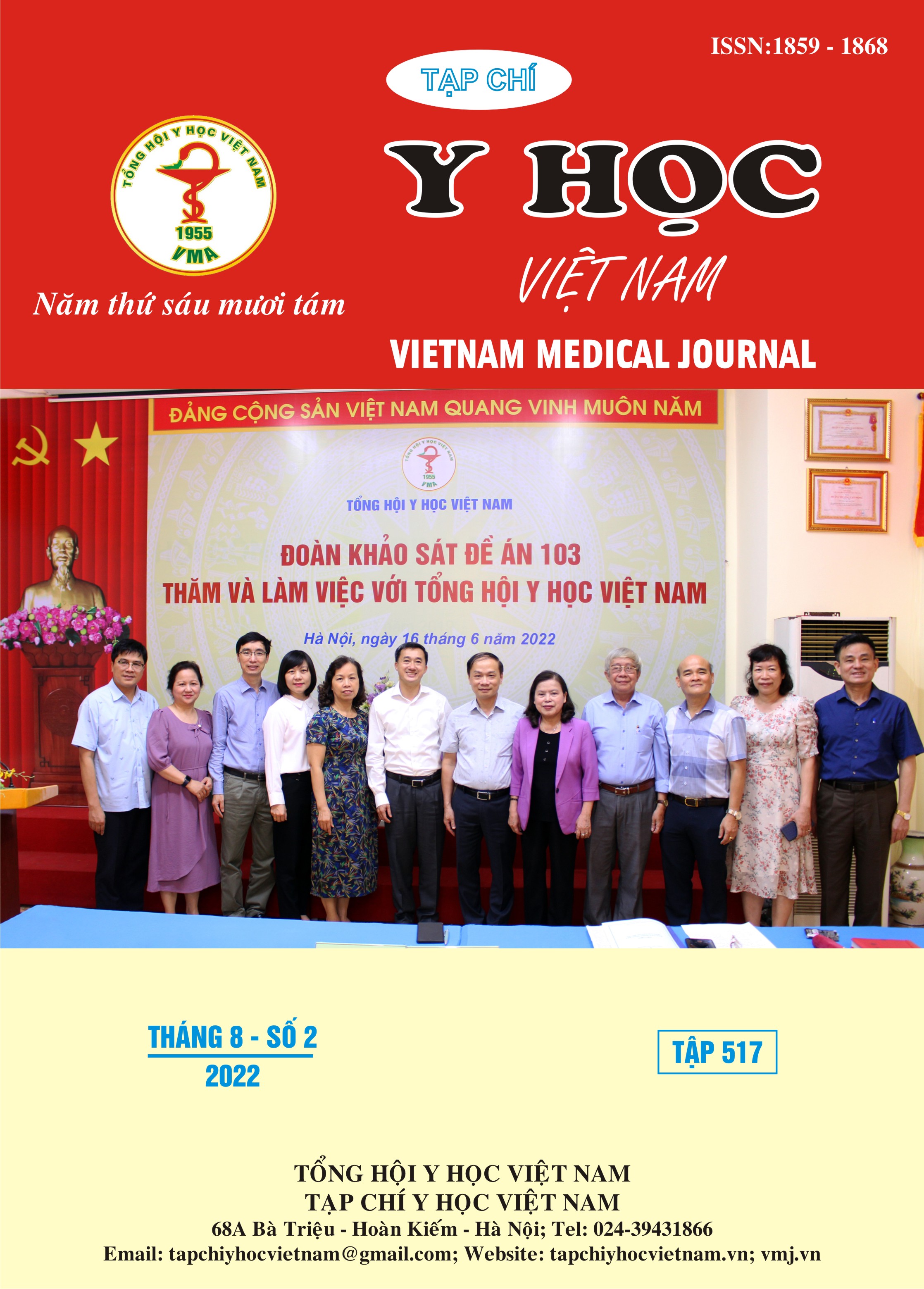SURVEY OF ANXIETY RATE AND RELATED FACTORS IN ELDERLY INPATIENTS AT CAN THO HOSPITAL OF TRADITIONAL MEDICINE DURING COVID 19 PANDEMIC
Main Article Content
Abstract
Background: Covid increases anxiety rates in different groups, especially the elderly. Surveying the rate of anxiety in this group of subjects during the Covid 19 epidemic is a matter of concern. Objective: To determine the rate of anxiety and some related factors in elderly inpatients at the Hospital of Traditional Medicine in Can Tho city. Materials and methods: This qualitative study with cross-sectional descriptive method by though a analysis on 201 inpatients over 60 years old from September 2021 to March 2022. To measure the anxiety was measured using the GAD7 scale. Results: 55.22% of patients participating in the study had anxiety with a score of 5 or higher. There were 48.75% patients with mild anxiety and moderate anxiety, and 6.46% patients with severe anxiety. The related factors were mild (OR=0.504; p=0.018), without owning health insurance card (OR=4.443, p<0.05), being infected with Covid 19(OR=22.00, p<0.001). and the time of being tranferred tho the field hospital from local (OR = 0.384, p < 0.05) which were found to be statistically significant in relation to anxiety. Conclusion: Anxiety is a fairly common disease in the elderly with underlying medical conditions, which is especially high during the Covid 19 pandamic period. This study provides an alarm signal for hospitals in general and Can Tho Traditional Medicine Hospital in particular as well as medical staff when treating the elderly patients. The traditional medicine sector needs to promote its role in researching and treating patients with anxiety after the Covid pandemic.
Article Details
Keywords
anxiety, elderly, traditional, hospital, Covid 19 epidemic
References
2. Löwe B, Decker O, Müller S, et al (2008). Validation and standardization of the Generalized Anxiety Disorder Screener (GAD-7) in the general population. Med Care;46(3):266-274. doi:10.1097/MLR.0b013e318160d093
3. Võ Kim Anh, Trần Văn Hưởng, Nguyễn Hồng Chương và cs (2022), Thực trạng trầm cảm, lo âu của người mắc bệnh ung thư điều trị nội trú tại Bệnh viện Quân y 175, năm 2019. Tạp chí Y học Việt Nam, tập 514, số 2(2022), trang 81- 85.
4. Bộ Y tế, Cổng thông tin của Bộ Y tế về đại dịch COVID-19, https://covid19.gov.vn/
5. Vũ Hồng Ân (2021), Tỉ lệ bị rối loạn lo âu và trầm cảm ở bệnh nhân đau thắt lưng mạn tính do thoái hóa cột sống, Tạp chí Y học Việt Nam, tập 505, số 1(2021), trang 43- 45.
6. Tổng cục Thống kê - Bộ Kế hoạch và Đầu tư (2022), Báo cáo tình hình kinh tế – xã hội quý I năm 2022, Báo cáo số 52/BC-TCTK ngày 29-03-2022
7. Trần Thị Hà An, Nguyễn Kim Việt, Nguyễn Khoa Diệu Vân (2016). Một số đặc điểm lâm sàng trầm cảm ở bệnh nhân đái tháo đường týp 2. Tạp chí Y học lâm sàng Bệnh viện Bạch Mai, số 95, trang 55 – 61.
8. Vu Thi Thu Trang, Khoa Le Anh Huynh, Huyen Thi Truong, et al (2022), Predicting Anxiety and Depression Among Patients With COVID-19 in Concentrated Isolation at Medical Camps in Vietnam: A Descriptive Cross-Sectional Study, Frontiers in Psychiatry, Vol 12, p 1:7.
9. Lê Minh Hoàng, Châu Nhị Vân (2022), Giáo trình Nội bệnh lý Y học cổ truyền 1, NXB Y học, Hà Nội


